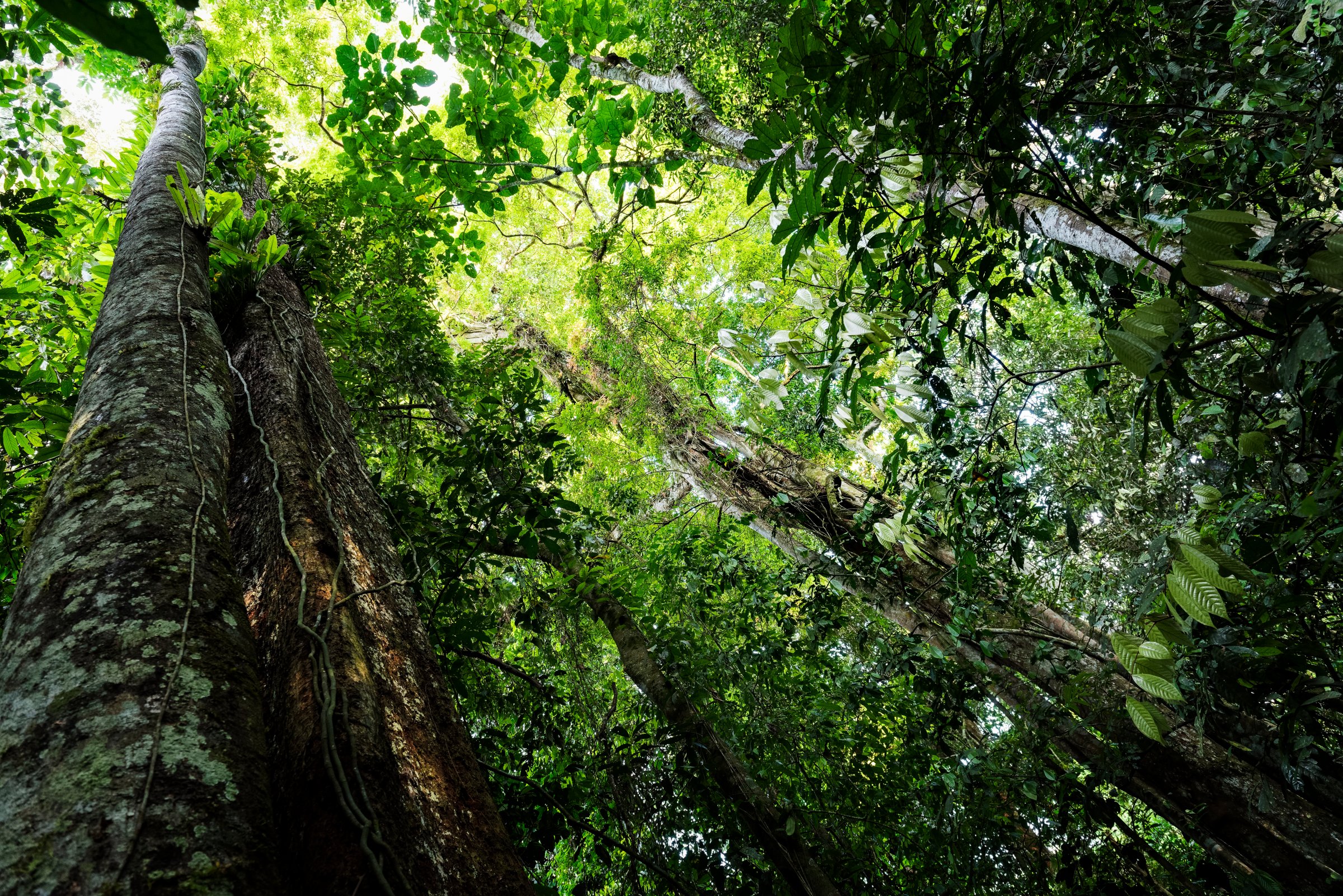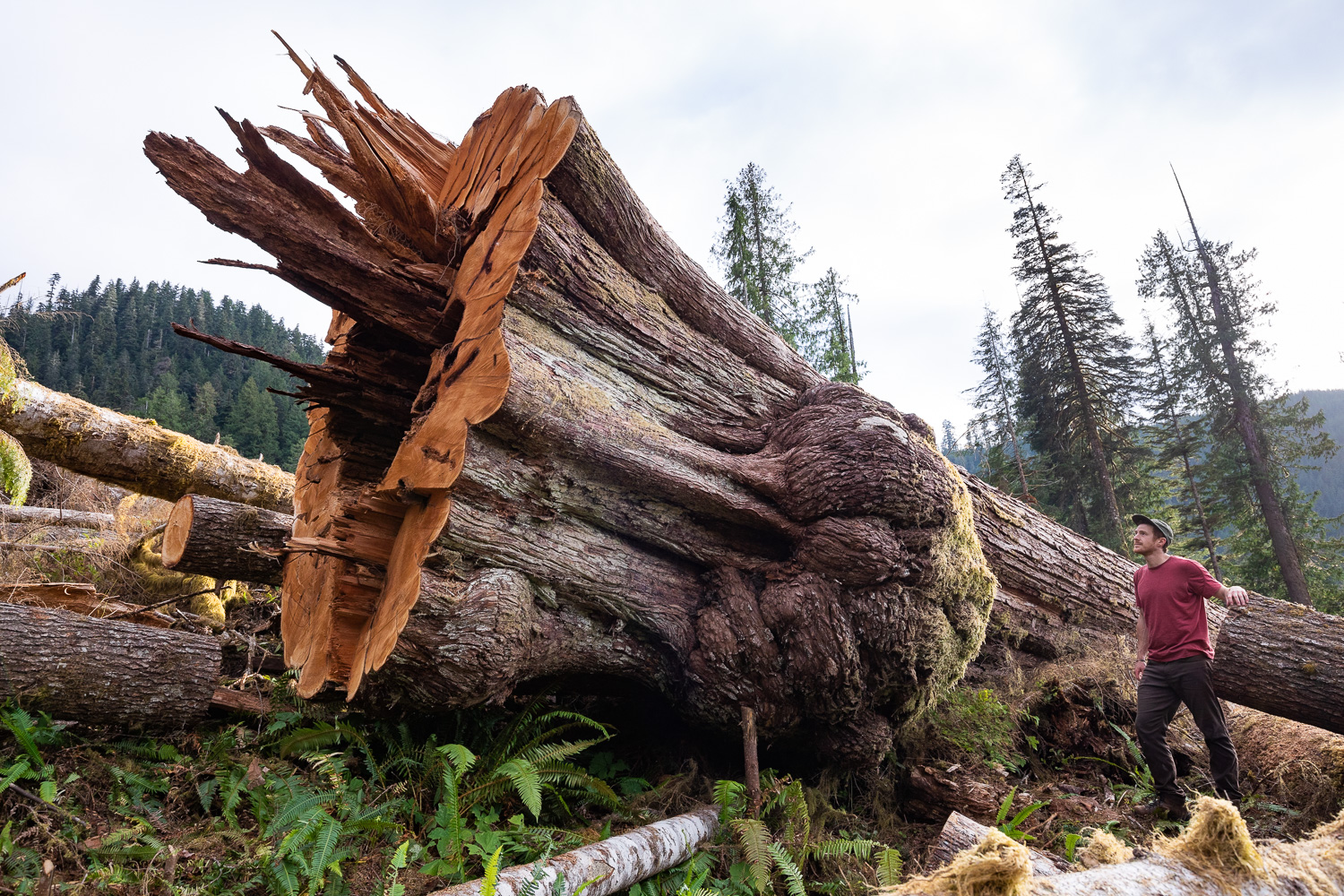
Forests have taught us far more than we could ever convey. The more we learn, the more we recognize trees as essential partners not only in our survival, but also in our education and socialization. March 21st is International Day of Forests, a day when we reflect upon the glories and gifts of the world’s forests, but also the serious threats they face.
Last month’s IPCC Report gave us the unvarnished truth: we face “unavoidable multiple climate hazards” over the next two decades, and are entering an era that will expose millions of people to food and water insecurity, and will drive extinction of numerous animal and plant species. Any further delay in global action “will miss a brief and rapidly closing window of opportunity to secure a livable and sustainable future for all.”
It’s hard to hear such dire news. Luckily, two of the most important solutions are our areas of expertise—conserving forests and advancing alternatives to wood for making toilet paper, clothing, and packaging. According to the IPCC, “reducing deforestation and forest degradation rates represents one of the most effective and robust options for climate change mitigation.”
But these climate heroes—our forests—are in constant danger. Even the most ancient and vital forests are being logged for lumber, biofuel pellets, cardboard, paper packaging, and viscose fabrics.
The trend of converting biodiverse and carbon-rich old growth forests to industrial plantations like pine, eucalyptus trees and palm oil has also cost us dearly. We’ve lost historical carbon storage and sequestration capacity, destroyed wildlife habitat, and exposed ourselves to the life-threatening dangers of climate instability: more extreme weather, more flooding, more fires, and even more virulent pandemics.
Large forests influence regional weather patterns. The Amazon rainforest, for example, generates atmospheric conditions that not only promote regular rainfall there and in nearby farmland, but as far away as the Great Plains of North America. By seeing trees only as sources of wood and pulp, we have weakened our natural allies. Purposeful and continued misinformation campaigns claiming that industrial logging is sustainable and carbon neutral are making humanity ever more vulnerable to truly existential dangers.
Conserving global forests is the fastest, most economical, and most effective way for us to stabilize our climate. Forests are also key to sustaining vibrant biodiversity, the remarkable and intricate array and inter-relationships of species that we share this planet with. These species work together to clean our air and water, and regulate our global carbon, water, and nutrient cycles. It is no accident that we co-inhabit a world covered in forests—they make life on Earth livable.

Forests are also amazing role models for how to live. Trees thrive when living in diverse communities. Contrary to the assumptions that trees only compete fiercely for survival, recent scientific studies show that trees in forests support each other, and are healthiest when collaborating with others. They protect each other from the weather, collaborate in capturing resources, redistribute nutrient and water to those in need, and support their offspring for a good head start in life. Forests can teach us about the entwined roles of birth and death, about resilience, and how caring for our communities is essential in our fight against climate change.
Since forests are integral to life on this planet, it’s time to implement as many solutions as we can to protect them. A growing chorus of scientists are calling for conservation of at least 30% of the planet’s forests by 2030 and for 50% of the Earth to be dedicated for maintenance of natural ecosystems by 2050.
Tangible approaches to protecting forests, while creating economic benefits for Indigenous and local communities, and ultimately all of us, are achievable. For example, empowering Indigenous people and enabling collaborations with western science, can enhance the ability of forests to survive, and therefore store carbon, cycle water, and protect species. Creating an economic system that values carbon storage through protection and restoration of forests will transform our future.
For instance, corporations can replace the massive amount of wood pulp currently used to make paper packaging and textiles with cellulose extracted from other non-tree sources such as recycled clothing and paper, waste food and agricultural residues. If this replacement was applied to the packaging supply chain alone, more than three billion trees in forests would be saved every year, adding up to vast forests saved globally by 2030.
We have a short window of opportunity to save old growth forests and alter our trajectory. Conservation of these carbon- and species-rich forest landscapes, previously untouched by industrial activity, is vital for planetary stability. When and where logging does happen, respecting Indigenous rights, saving the Mother Trees (big trees that connect and support other trees through an underground mycelium network, affectionately dubbed the wood-wide web), and maintaining their networks has to be part of sustainable forest management. Additionally, regenerating degraded forests with a diversity of species is necessary to rebuild forests’ resilience and self-healing capabilities.
In the last two years—and even past few weeks—we have seen how supply chains and governments can pivot to face emergencies, and reject goods from unconscionable sources. We can do this to save the world’s forests too. A livable planet requires no less.
More Must-Reads from TIME
- Cybersecurity Experts Are Sounding the Alarm on DOGE
- Meet the 2025 Women of the Year
- The Harsh Truth About Disability Inclusion
- Why Do More Young Adults Have Cancer?
- Colman Domingo Leads With Radical Love
- How to Get Better at Doing Things Alone
- Michelle Zauner Stares Down the Darkness
Contact us at letters@time.com